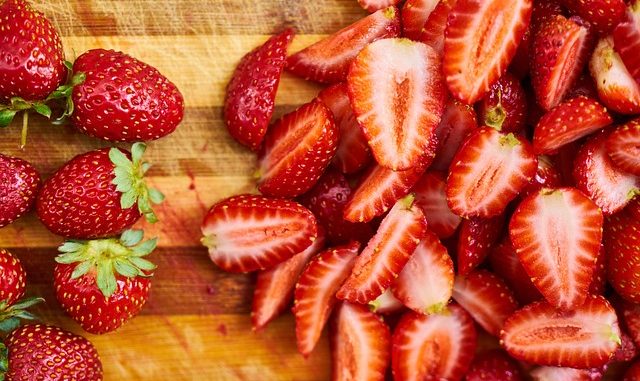
The removal of anthocyanins is a useful process in the commercial preparation of decolourised juices for further development. Anthocyanins are water-soluble pigments found in plants especially fruits such as berries and vegetables which offer a colour range between red and deep purple. They are now being used as effective antioxidants in their own right and for controlling cancer, diabetes, cardiovascular and neurodegenerative diseases.
A number of approaches are possible including the addition of anthocyanases, adsorption and membrane filtration.
For this article we will focus on adsorption.
Adsorption
A number of materials are available including macroporous resins which are synthetically manufactured, and natural materials such as chitosan.
Chitosan is available as a natural resource in some abundance because it is a derivative of chitin which is sourced from waste crustacean shells. These mainly come from crab, shrimp and lobster processing.
Anthocyanins are removed to some degree using chitosan from macerated radish extracts in solution (Gao et al., 2014). Such an adsorbent will preferentially bind other compounds such as glucosinolates. The level of anthocyanin binding was between 22% to 28%. The amount of glucosinolates bound was inverse to that of anthocyanin binding which indicates a level of competitive binding. It illustrates a point in industrial application that design of a suitable system for removal of anthocyanins must also content potentially with competing compounds. The nature of the binding forces between anthocyanins and other compounds is most likely electrostatic involving charge neutralisation and some hydrogen bonding.
Later applications have covered adsorption from red grape wastes. In that example the adsorption was high when the pH of solution was pH 4 (Pinheiro et al., 2014). In that example, performance of chitosan was compared with alginates (see later). Apparently, a variety of equilibrium isotherm binding models could have described adsorption which is very non-specific.
Resins
Amberlite XAD-7HP can be used to bind anthocyanins from aqueous ethanol extracts of purple-fleshed potatoes (Heinonen et al., 2016). All impurities are claimed to be removed and the use of a resin like XAD allows for scaling-up. Desorption is possible with 75 vol.% acidic (7 vol.% acetic acid) aqueous ethanol. Impurities such as glucose, unknowns including proteins and amino-acids are also separated. The effects of flow rate on adsorption, and ethanol and acetic acid concentrations on desorption were explored. Interestingly, the breakthrough curve in desorption was highly dispersed and suggested to be due to anthocyanin agglomeration.
Sepabeads SP207 is a porous synthetic adsorbent with high hydrophobicity and selectivity for non-polar molecules. It was used as the final purification step following membrane processing in the recovery of anthocyanins from blue corn (Cerón-Montes et al., 2015).
Alginates and Agarose
Alginate was used effectively to adsorb anthocyanins from grape skin waste (Pinheiro et al., 2014). The pH of the solution was best for adsorption at pH8.
Modelling followed the Langmuir and Freundlich binding approach. A pseudo-1st order model was best at describing binding.
Zeolites
ZIFs-8 (zeolite imidazolate frameworks) have been constructed which adsorb anthocyanins (Eman et al., 2022) from roselle for example. These are built on fibre templates. They can bind about 0.5g of anthocyanin per gram of material which makes them very effective adsorbents. The binding can be completed in an hour. The optimal binding amounts are reduced by 5% with repeated use (5 cycles) which compares favourable with adsorbents based on alginates, chitosan etc.
Aqueous Two-Phase Separation (ATPs)
ATPs is a rival process to adsorption and has been used to purify anthocyanins from Peristrophe bivalvis (L.)Merr leaf (Le et al., 2022).
References
Cerón-Montes, G. I., Martin-Martinéz, S., Yañez-Fernández, J., Quezada-Cruz, M., & Castro-Munoz, R. (2015). Preliminary purification of anthocyanins from blue corn by adsorption and electrophoresis. Revista mexicana de ingeniería química, 14(1), 99-108.
Emam, H. E., & Abdelhameed, R. M. (2022). Separation of anthocyanin from roselle extract by cationic nano-rode ZIF-8 constructed using removable template. Journal of Molecular Structure, 1267, 133607 (Article)
Gao, R., Jing, P., Ruan, S., Zhang, Y., Zhao, S., Cai, Z., & Qian, B. (2014). Removal of off-flavours from radish (Raphanus sativus L.) anthocyanin-rich pigments using chitosan and its mechanism (s). Food Chemistry, 146, pp. 423-428 (Article).
Heinonen, J., Farahmandazad, H., Vuorinen, A., Kallio, H., Yang, B., & Sainio, T. (2016). Extraction and purification of anthocyanins from purple-fleshed potato. Food and Bioproducts Processing, 99, pp. 136-146 (Article)
Le, P. H., Dao, D. N., Huynh, T. Q., Tran, T. T., & Nguyen, V. (2022). Extraction and purification of anthocyanins from Peristrophe bivalvis (L.) Merr. leaf (Acanthaceae) using aqueous two-phase systems. Nat. Prod. Res. Online communication accessed 30th January 2023.
Pinheiro, C. P., Moreira, L. M., Alves, S. S., Cadaval Jr, T. R., & Pinto, L. A. (2021). Anthocyanins concentration by adsorption onto chitosan and alginate beads: Isotherms, kinetics and thermodynamics parameters. International Journal of Biological Macromolecules, 166, pp. 934-939 (Article)
Leave a Reply